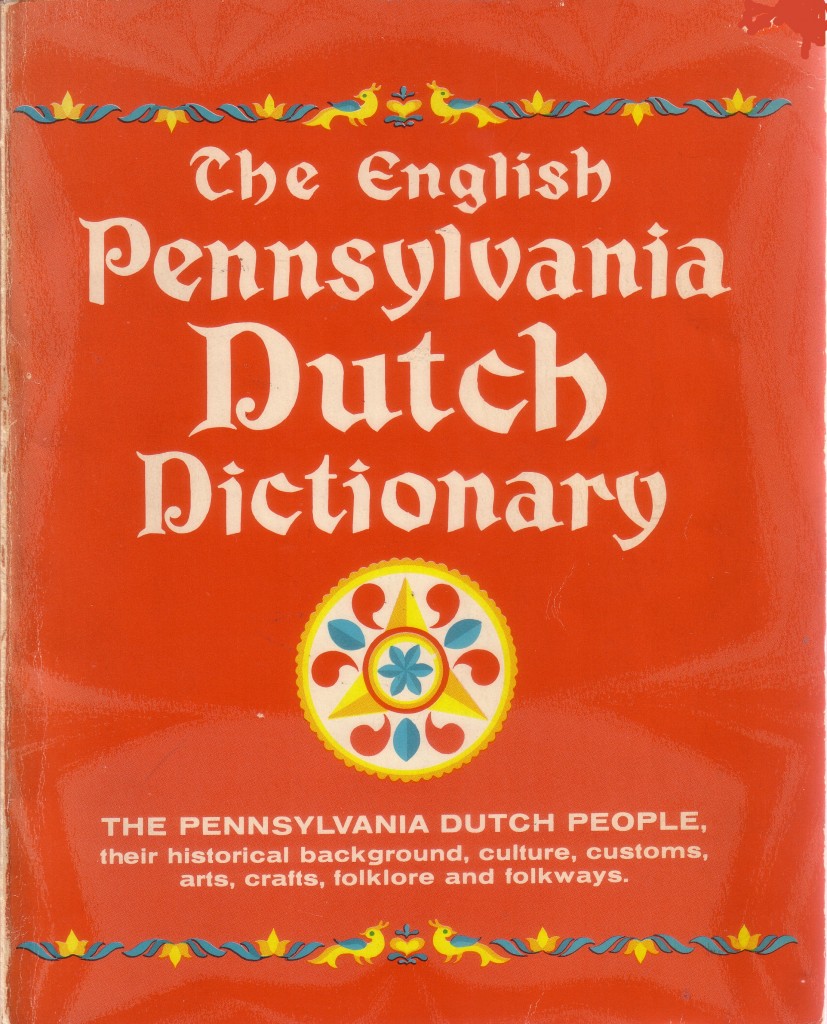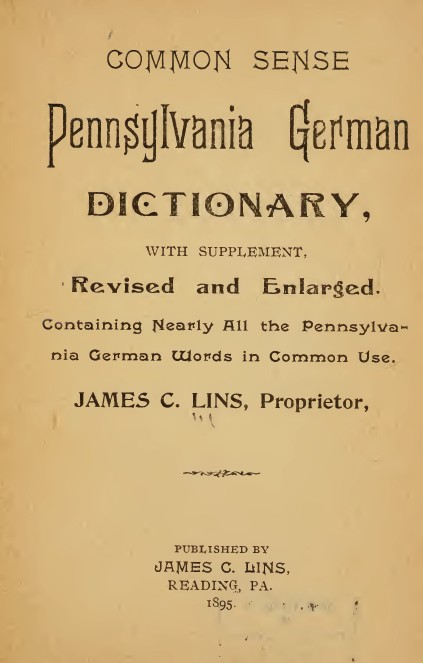Pennsylvania Dutch Foods of the Civil War Period
Posted By Norman Gasbarro on February 6, 2011
Previous posts on the subject of the Pennsylvania Dutch language noted the words that were used to describe family relationships, occupations, the religious life, medicine, and acts of war. The first post in that series gave a brief history of the Pennsylvania Dutch and told of their appearance in the Lykens Valley area. At the time of the Civil War, although many of the German families had been in America for several generations, Pennsylvania Dutch was still the language of the home and of commerce in the Lykens Valley area for the descendants of those immigrants. Many were farmers.
This post begins a series on Pennsylvania Dutch foods of the Civil War and will include some of the Pennsylvania Dutch words used to describe basic foods and then move to combinations of those foods in recipes.
Dictionaries are available so we can look at some of the words and terms that may have been used in the Civil War period. One of my personal favorites is The English Pennsylvania Dutch Dictionary and the Pennsylvania Dutch People which includes English “equivalents” by Howard Snader. The “equivalents” are Snader’s suggested ways of pronouncing the words.
The Basic Foods
Fruit (obscht); Vegetables (ge MISE), Grain (frucht), Nuts (niss)
Apple (OBB el); apples (EBB el); apricots (ob ri GOSH a); asparagus (SCHPARR a graws); barley (garsht); bean (boon); beans (boona); beet (reeb); red beet (RODE reeb); red beets (RODE reew a); blackberries (BLACK beer a); black walnut (Schwartz ie WOL niss); blueberries (BLOW a beer a); cabbage (grout); carrot (GALE reeb); carrots (GALE REE wa); celery (TZEL e rich); cherries (KARSH a); chestnut (kescht); corn (WELSH kann); corn cob (WELSH kann GROOTZ a); cucumber (GOOM er); elderberries (HOLL er beer a); endive (ON dift i); figs (FEIG a); garlic (GNOV loch); gooseberries (GRUSS el beer a); grapes (DROW a); hazelnuts (HOZZ il niss); horse radish (MEER red ich); kale (graut); lettuce (za LAWD); maize (WELSH kann); melon (me LOON); mulberries (MOWL beer a); oats (HOW er); onion (TZWIW wel a); parsley (PAY ter ly); parsnip (BOSCHT nawt); peach (PARSH ing); peanut (GROOND niss); pear (beer); peas (ORR ibs a); plum (blaum); potato (GROOM beer); pumpkin (KAR ibs); raspberries (HEM beer a); red beets (RODE ree wa); rye (kann); strawberries (OBB beer a); sweet corn (SEES WELSH kann); sweet potato (SEES GROOM beer); tomato (o MATZ); turnips (REEW wa); walnut (WOL nis); watermelon (WASS er me loon); wild cherries (WILLD kirsch a).
Meat (flaysch) & Dairy
Bacon (FLITCH); bacon (si da SCHPECK); beef (RINS flaysch); bologna (ba loon i); butter (BUDD er); buttermilk (BUDD er MIL ich); cheese (kase); chicken (HINK el); chicken pattie (HINK el bletch ly); cottage cheese (SCHMEAR kase); cream (rawm); egg (oy); geese (gans); ham (HINN er schoonk a); ham (SCHNOOK a flaysch); liverwurst (LEW wer warscht); milk (MIL ich); pig (sow); pig ears (sigh OR a bledd er); rabbit (haws); sausage (warscht); sausage (BROD warscht); smoked sausage (g’schmok’d de warscht); skimmer milk (OPP g’schepp de mil ich); squirrel (AICH haws); steak (schteak); pig stomach (SIGH MAWG er); tongue (tzung); yolk (DUDD er).
Herbs, Spices (schpice), Condiments, etc.
Baking soda (BOK so da); baking soda (SAL ar ade); black pepper (SCHWARTZ er PEFF er); bran (GLI a); buckwheat (BUCH way tza); butter fat (BUDD er fett); catsup (CATCH up); cider (SI der); cloves (NEG lich er); coffee (COFF e); corn meal (WELSH kann mail); corn syrup (WELSH kann me loss ich); dill (FENN ich el); dough (dake); flour (mail); honey (HUNN ich); juice (bree); lard (schmolz); licorice (LICK er ish); malt (molz); molasses (me LOSS ich); nutmeg (MOOSCH gawrt niss); pepper (PEFF er); red pepper (RO der peff er); white pepper (WISE er peff er); pepper and salt (PEFF er un salz); pickle (GOO mer); salt (salz); sugar (TZOOK er); tea (tay); vinegar (ESS ich); water (WASS er); whiskey (drom); yeast (sodz).
A few words are noticeably missing as they did not appear in the above-mentioned dictionary. Perhaps someone can supply the Pennsylvania Dutch words or “equivalents.”
For those who wish to study the language further, an excellent dictionary of Pennsylvania German to English, Common Sense Pennsylvania German Dictionary, published by James C. Lins in Reading, Pennylvania, in 1895. It’s a free download and a great resource. Note though that there is no pronunciation guide and the German word must be looked up to find its English meaning.
The next post in this series, appearing in one week, will discuss Pennsylvania Dutch words used to describe some meals – main dishes and desserts. A few favorite recipes will also be given.
 ;
;




Hello
I was wondering… Why is it called Pennsylvania Dutch and not German as it is derived from German?
Greetings, Marianne